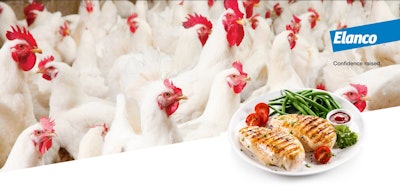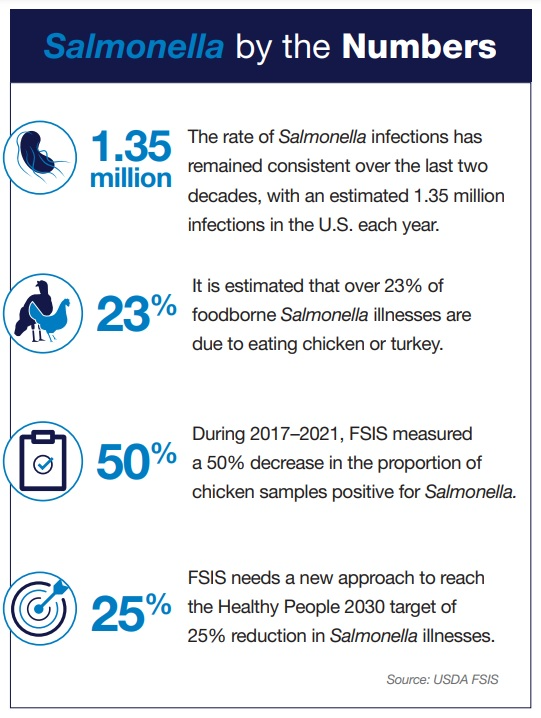
Multi-prong approach is needed to help reduce Salmonella in poultry.
Brand Insights from Elanco
Salmonella is here to stay as a pervasive foodborne pathogen. But the poultry industry can do its part to help reduce Salmonella illnesses associated with poultry products. With increased attention from the public and regulators on foodborne illness, Salmonella is a top industry concern.

The U.S. Department of Agriculture’s Food Safety and Inspection Service (FSIS) announced an initiative aimed at reducing Salmonella illnesses linked to poultry production and processing. As stated by the USDA, “Reducing Salmonella infections attributable to poultry is one of the department’s top priorities.” FSIS is proposing several key activities to gather the data and information necessary to support future action and move closer to the national target of a 25% reduction in Salmonella illnesses by 2030.
There are three proposed components of this initiative:
- Emphasizing pre-harvest Salmonella interventions and flock testing at receiving.
- Requiring enhanced processing controls and multi-point sampling.
- Considering the implementation of final product standards based on certain levels or types of Salmonella.
Many factors make reducing Salmonella in poultry production a difficult task. Processing solutions have traditionally been the focus to safeguard consumers from foodborne illness. However, as identified in the FSIS initiatives, an effective plan for minimizing the impact of Salmonella and other foodborne pathogens requires the involvement of every person and point of the poultry production cycle, including on the farm.
Read the full article in the May issue of WATTPoultry USA.
